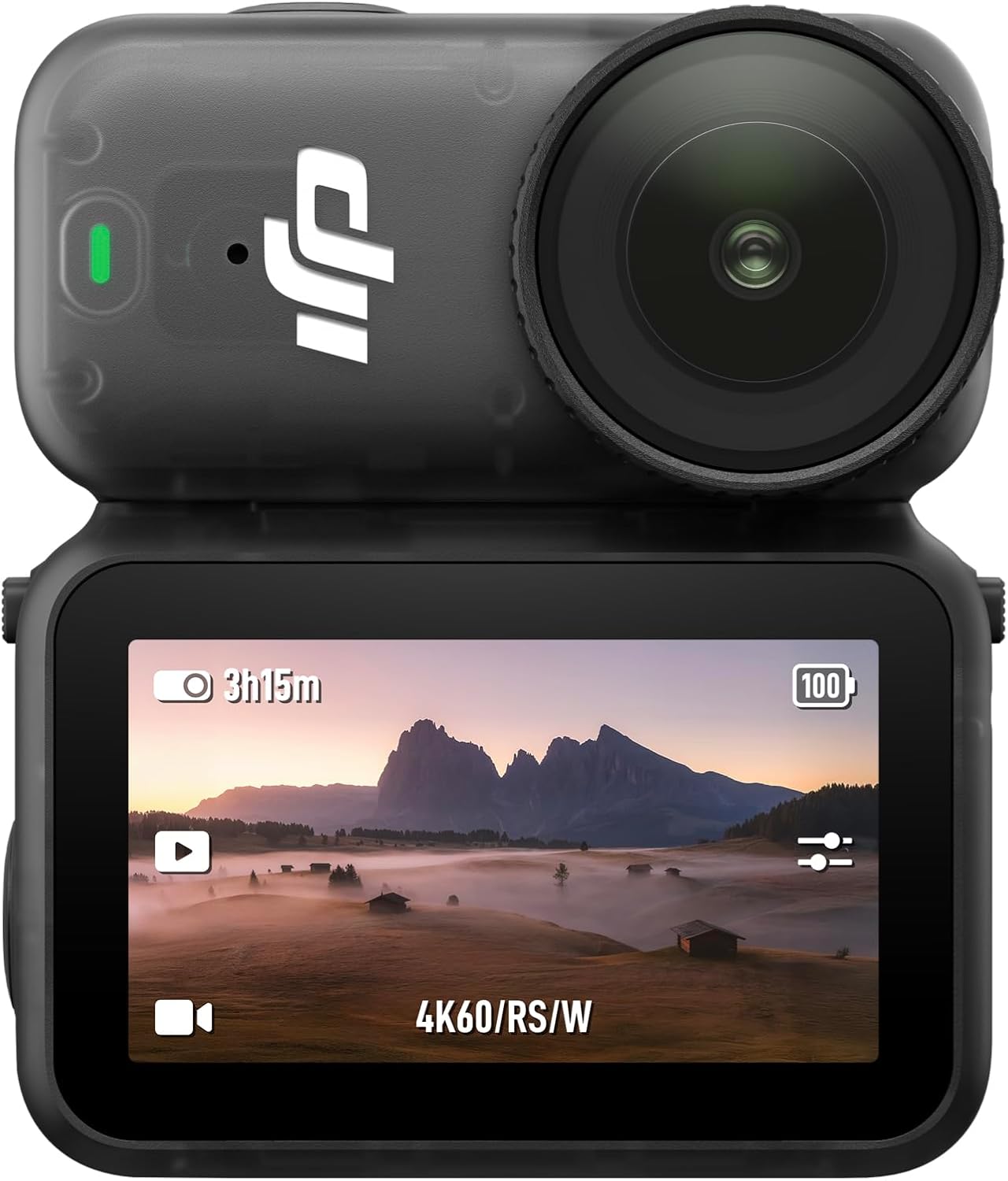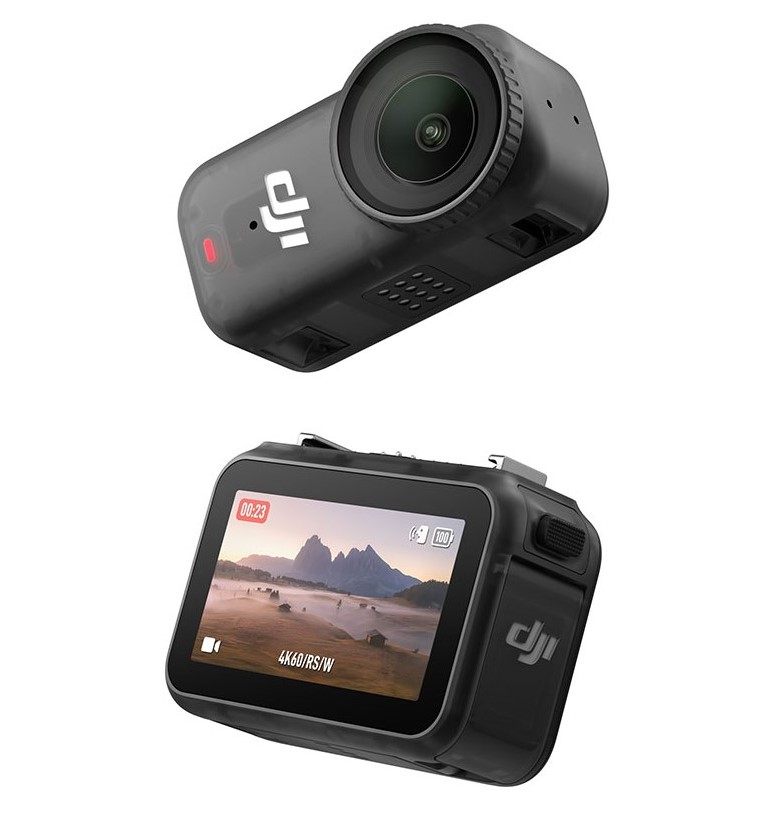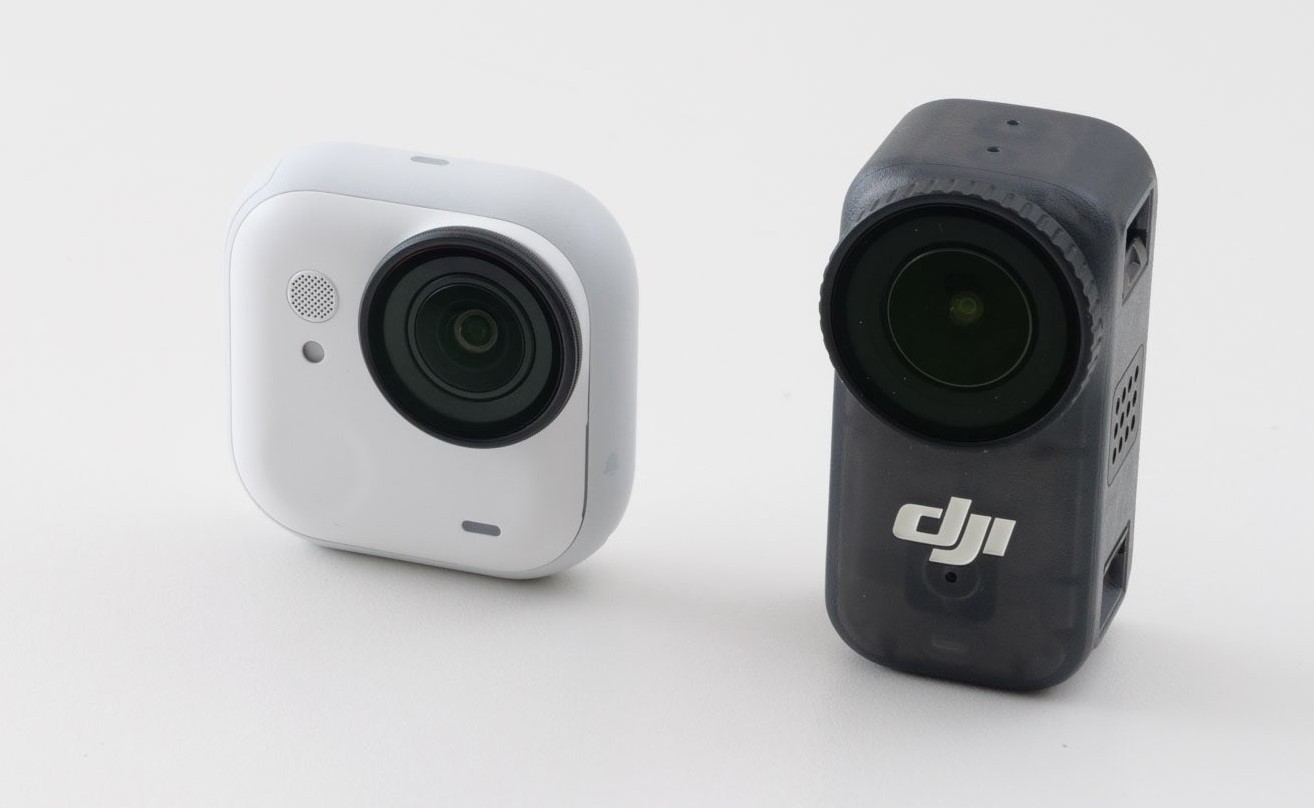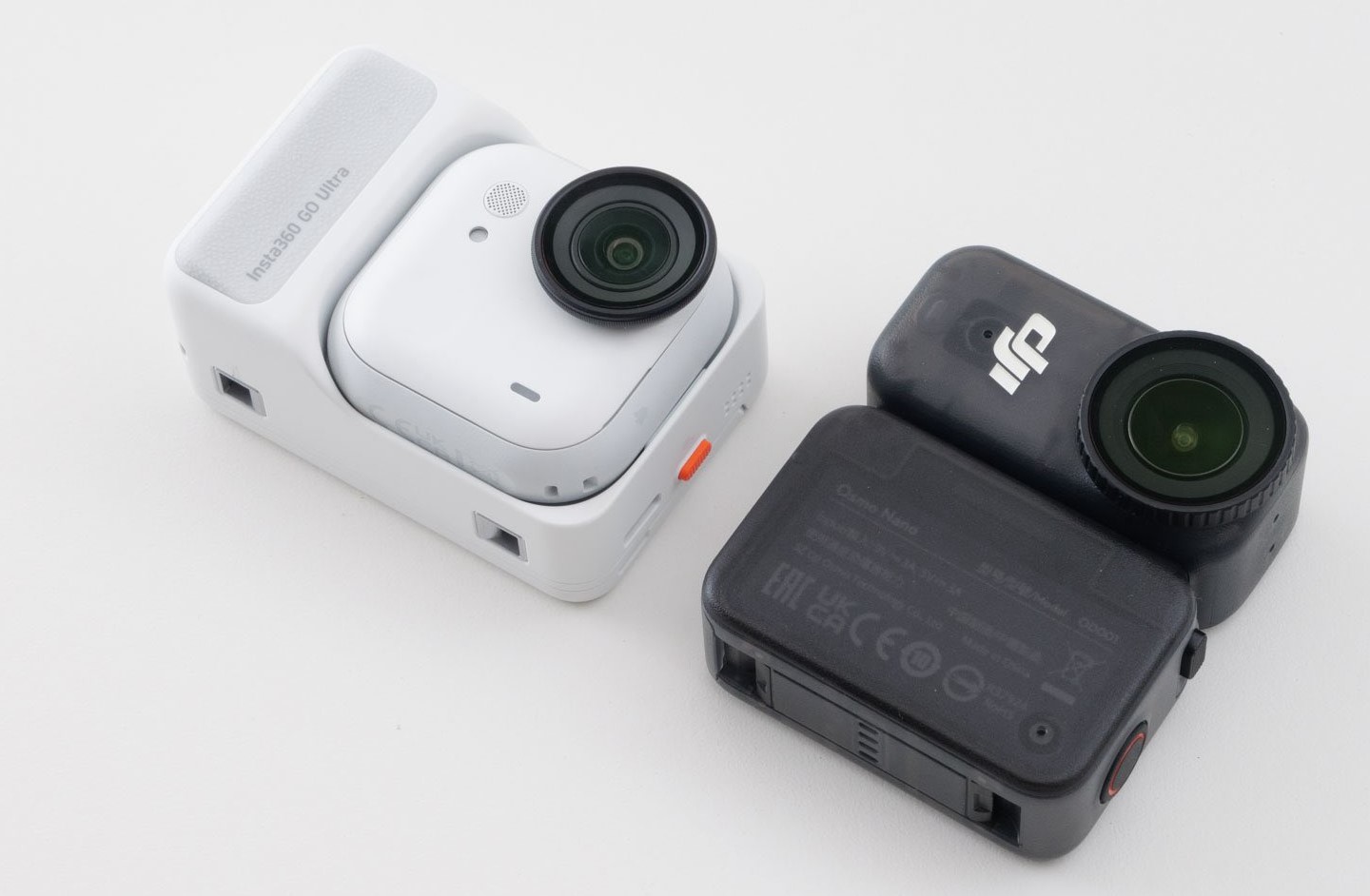DJI Osmo Nano Announced: Price, Features, and Availability of DJI’s Smallest Modular Action Camera
posted Tuesday, September 23, 2025 at 10:02 AM EST

DJI has officially unveiled the Osmo Nano, its most compact and modular action camera yet. Designed to challenge the Insta360 Go Ultra, the Osmo Nano combines a lightweight camera module with a companion display dock, offering creators a balance of portability, flexibility, and professional-grade shooting features.
The camera will begin its global launch on September 23, 2025, though U.S. availability remains uncertain as DJI continues to “optimize its strategy” for the American market.
** Affiliate Disclaimer: We may earn a commission from purchases made through our links. **
DJI Osmo Nano Pricing and Availability
The Osmo Nano will be available starting September 23, 2025, outside of the United States. The company has stated that Osmo Nano will not be "available officially in the U.S. market on official websites upon its global launch." However, the DJI is commited to catering to its U.S. clients and is currently optimizing its strategy "amidst evolving local conditions.”
- Standard Combo (64GB): $419 CAD / £239 GBP
- Expanded Combo (128GB): $459 CAD / £239 GBP
DJI has not provided details on a U.S. release date, meaning buyers in the U.S. may need to look to third-party sellers or imports until further notice. For Canada, the United Kingdom, and international clients, the Osmo Nano can be purchased from the following.
- Amazon
- Wex Photo (United Kingdom)
- DJI Online Store
Key Features of the DJI Osmo Nano

Despite weighing just 52 grams and measuring 52 × 29 × 28mm, the Osmo Nano is packed with features that place it well above entry-level action cams:
- 1/1.3-inch sensor with 35MP stills (6880 × 5160px)
- f/2.8 lens, 143° field of view
- Up to 13.5 stops of dynamic range
- 4K video at 60fps, 4K/120fps slow motion, and 10-bit D-Log M color profiles
- SuperNight mode for low-light shooting
- 42GB internal storage + microSD expansion
- Waterproof up to 10m (camera module only)
The camera is supported by DJI’s RockSteady 3.0 stabilization and HorizonBalancing, keeping footage smooth and level even in fast-moving scenarios.
Updated Design and Modular Usability
The Osmo Nano is built around a two-part modular system:
- Camera Module: Waterproof, ultra-light, and optimized for mounting in tight spaces
- Multifunctional Vision Dock: A 1.96-inch OLED touchscreen that acts as both a control monitor and a fast-charging dock
The dock can:
- Recharge the camera to 80% in just 20 minutes
- Extend recording up to 200 minutes at 1080p24 or 60 minutes at 4K30
- Add a microSD card slot for expanded storage
- Serve as a vlogging display when flipped
Both modules are splash-resistant or waterproof, ensuring durability in outdoor conditions.
DJI Osmo Nano vs Insta360 Go Ultra

The Osmo Nano is positioned directly against the Insta360 Go Ultra, but with some key differences:
- Sensor: The Go Ultra features a slightly larger sensor, though real-world gains are expected to be minimal.
- Stills: Go Ultra leads with 50MP images, while the Osmo Nano offers 35MP output.
- Display: The Go Ultra has a larger built-in display, while the Osmo Nano’s smaller 1.96-inch touchscreen prioritizes compactness.
- Storage: The Osmo Nano offers internal storage, which the Go Ultra lacks.
- Design: The Osmo Nano’s slimmer modular design makes it easier to mount in creative setups, while the Go Ultra’s bulkier body favors usability with its larger display.
For size and flexibility, the Osmo Nano may be the better choice. For users who value a bigger screen and don’t mind extra weight, the Go Ultra holds the advantage.
Features for Creators
DJI has included multiple features tailored for content creators:
- Dual built-in microphones with support for DJI wireless mics (no receiver required)
- ND filter compatibility for exposure control
- Full mounting accessory kit included in the box
- Gesture control support for selfies
DJI Announces the Osmo Nano, Its Smallest Modular Action Camera Yet
DJI has officially introduced the Osmo Nano, a compact and modular action camera designed to take on the Insta360 Go Ultra. With a lightweight camera module and a companion display dock, the Osmo Nano brings flexibility, portability, and professional-level features to the action camera market.
A Compact Camera With a Large Sensor
The Osmo Nano consists of two components: a main camera module and a display module. The camera itself weighs just 52 grams and measures 52 × 29 × 28mm, making it DJI’s smallest action camera to date. Despite its size, it houses a 1/1.3-inch sensor capable of capturing 35-megapixel stills (6880 × 5160px) through an f/2.8 lens with a 143° field of view. DJI claims up to 13.5 stops of dynamic range, promising detailed images in both bright sunlight and low-light conditions.
For video, the Osmo Nano supports 4K 4:3 recording at up to 50 fps, 4K UHD at 60 fps, and slow-motion 4K at 120 fps. It also supports 10-bit color depth and D-Log M color profiles for maximum flexibility in post-production. A dedicated SuperNight mode enhances sharpness and reduces noise in low-light environments.
Recording Formats and Stabilization
Video resolutions include:
- 4K (4:3): up to 50 fps
- 4K (16:9): up to 60 fps
- 2.7K (4:3 / 16:9): up to 60 fps
- 1080p (4:3 / 16:9): up to 60 fps
DJI has also added two of its standard action camera stabilization modes to the Osmo Nano. HorizonBalancing automatically corrects tilted horizons, while RockSteady 3.0 reduces shakes while preserving dynamic movement. Both modes work up to 4K60 fps.
Multifunctional Display Dock
The companion 1.96-inch OLED touchscreen display module, dubbed the Multifunctional Vision Dock, attaches to the camera via magnets and a quick-release latch. It can be used as a control and monitoring unit or flipped for vlogging setups.
The dock doubles as a fast charger, bringing the camera module to 80% in just 20 minutes. It extends recording times to 200 minutes at 1080p24 or 60 minutes at 4K30. The unit also includes a microSD card slot for expanded storage.
The camera module itself is waterproof up to 10 meters, while the dock carries an IPX4 splash-resistant rating, meaning it can’t be submerged.
Features for Creators
The Osmo Nano supports DJI microphones without a receiver, while the camera module integrates dual built-in mics for stereo recording. It is also compatible with neutral density (ND) filters, giving filmmakers more exposure control in bright conditions.
DJI has included a full set of mounting options in the box, with support for existing DJI action camera mounts.
DJI Osmo Nano vs Insta360 Go Ultra

On paper, the DJI Osmo Nano and Insta360 Go Ultra appear closely matched in terms of performance. The Go Ultra sports a slightly larger sensor, but the gains are likely minimal given the small difference in size. Both cameras record similar video formats, though the Go Ultra has an edge in stills with its 50-megapixel resolution, compared to the Osmo Nano’s 35MP output.
The Nano’s 1.96-inch touchscreen is smaller than the Go Ultra’s, but both offer similar functionality. Where the Osmo Nano pulls ahead is in internal storage — something the Go Ultra lacks entirely.
Form factor is another key difference. The Osmo Nano resembles last year’s Go 3S more than the Go Ultra. The Nano’s camera module is slimmer and easier to mount in tight spots, though it comes with a smaller display. Meanwhile, the Go Ultra’s squarer, bulkier build allows for a larger screen, which may be preferable for some users.
If size and flexibility matter most, the Osmo Nano is the better pick. For those who value a bigger display and don’t mind added bulk, the Go Ultra wins out. As for their companion apps, both are feature-rich and polished — choosing between them often comes down to user preference and familiarity.
Pricing and Availability
The DJI Osmo Nano launches globally on September 23, 2025, but will not be officially available in the U.S. at launch. DJI confirmed to PetaPixel that it is “optimizing its strategy” for the U.S. market amidst ongoing restrictions.
For international buyers, the Osmo Nano is priced at $419 CAD / £239 GBP for the 64GB standard combo, while the 128GB version retails for $459 CAD / £239 GBP.